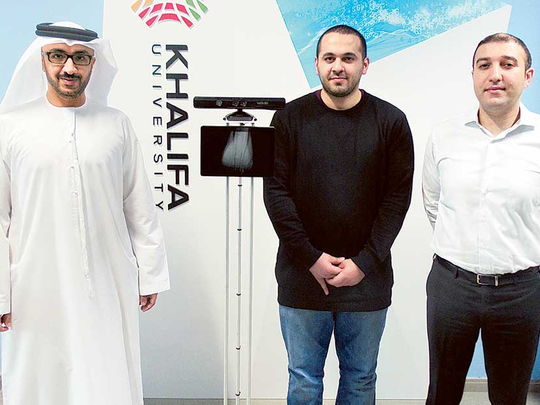
Abu Dhabi: Robots may soon be living in several homes across the UAE thanks to the work of researchers from Khalifa University who have developed a prototype robot that can act as a homecare worker for the elderly.
The United Nations World Population Ageing report has projected that the number of people aged 60 and over is set to make up 23 per cent of the UAE’s population by 2025, and 26 per cent of the UAE’s population by 2050.
As a result, there’s an ever-growing need for providing homecare, with the healthcare industry finding itself overstretched to meet the demand.
“There is a dearth of nurses and doctors who are trained in homecare, so what we’re trying to do is to complement the existing workforce by having tasks that can be easily done by a robot,” said Prof Tarek Taha, one of the researchers behind the project.
Echoing Prof Taha’s remarks, Alaa Al Khatib, another researcher associated with the project, said the goal was to reduce the number of elderly people going to care homes and hospitals.
“With the rising number of people above the age 60, there will be an increased strain on governments, the healthcare industry, and families. The solution people are now looking for is the use of smart technology, and that’s the idea [behind] these robots,” he said.
Dr Hassan Al Muhairi, who is also involved in the programme, explained the functions that would be performed by the robot.
“The robot will provide informal care, so it will provide reminders for the person to take their medicine. It will also be able to hold conversations with the person, and it can also initiate phone calls if the person wants to talk to their family,” he said.
According to Prof Taha, the robot will have the ability to send live information to the person’s doctor in case of an emergency.
“The elderly person can wear a device that monitors his or her health and should there be a trigger event or an anomaly that suggests an emergency, the robot can make a request from the healthcare officials to intervene,” he said.
The robot, said Prof Taha, would also be capable of learning and getting smarter over time. “The idea is to have a robot with access to a cloud-based system that can download and extract information, so if a robot has a limited functionality, we can expand its ability by downloading a certain application on the cloud,” he explained.
“For example, if the person wants the robot to know how to find the kitchen, the robot can simply download this from a cloud entity that tells it how to find the kitchen, and this can be expanded to many different areas,” he added.
Dr Al Muhairi remarked that the robot would be able to function as a smart phone does, but with the added benefit of providing a physical presence.
“The benefit with the robot is that it can move around, and also the elderly person feels more connected to the robot rather than a smart phone or smart device,” he said.
Echoing this point, Prof Taha emphasised the importance of having the elderly person feel that they are in the presence of a real and social being.
“The trend these days is to have a mobile-based platform that acts and talks like a human, and at the same time this gives elderly people the feeling that they are talking to an entity that not only acts smart but looks emotionally compatible,” he said.
About the robot’s design, Dr Al Muhiari said, “The device is not a humanoid robot with arms and legs, but rather an upright mobile robot.
“It is a moving platform with wheels that holds a camera on the top of it, the robot is able to collect information and recognise the person through the camera. The robot can also follow the person around if the person makes such a command.”
Number of people over 60 in UAE
23% by 2025
26% by 2050
_












